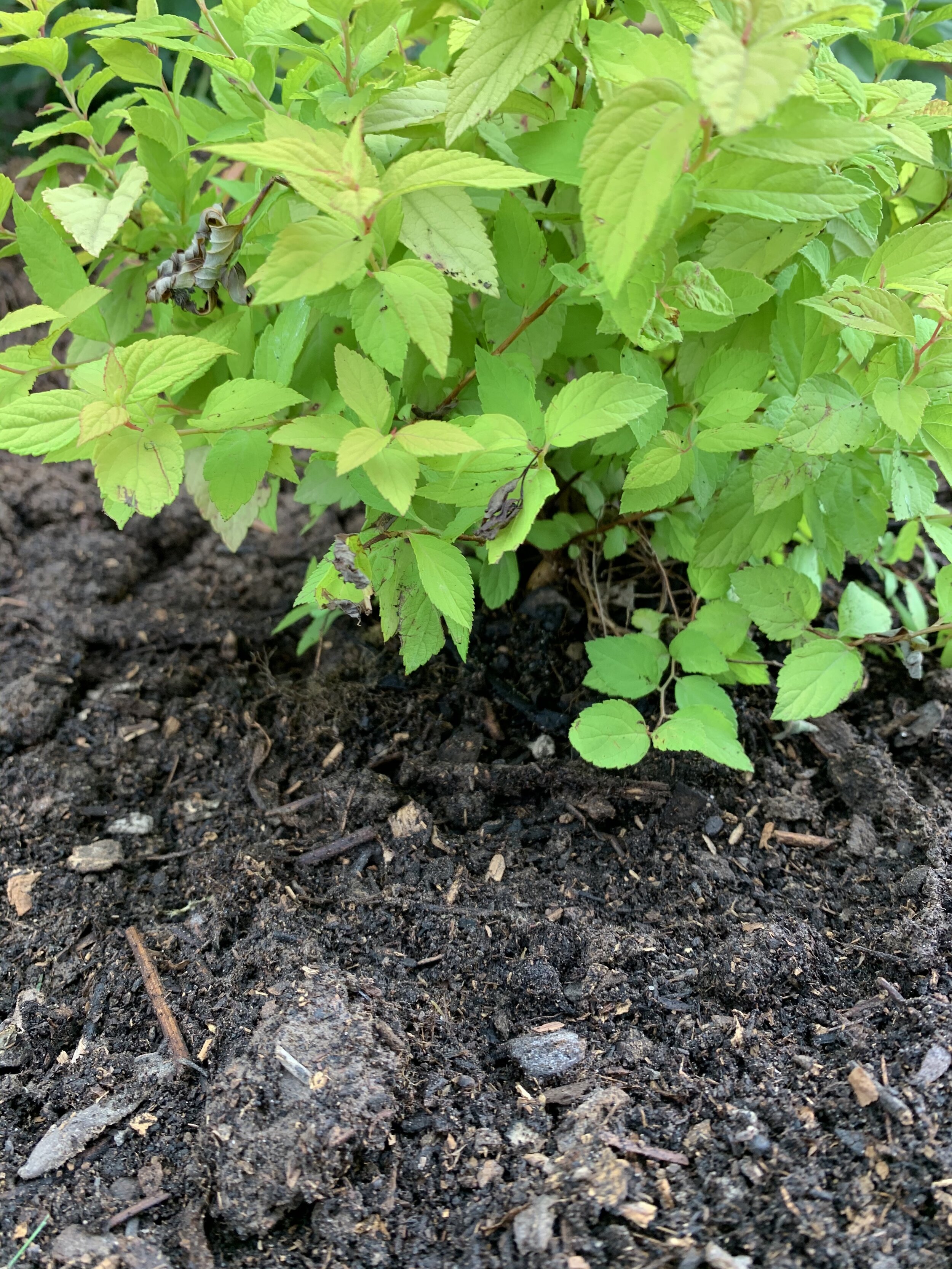Spirea – One of this Spring’s Top Performers
One of the most interesting things this spring has been the rediscovery of often overlooked plants.
Rediscovery of shrubs that in years past were overplanted in the landscape only to be overlooked in modern plant design.
Mostly, shrubs worthy of rediscovery because they took on the extreme cold of February and have put on a brilliant show this spring. Shrubs that not only survived our uncommon weather pattern of the past year, but actually thrived.
Spirea has proven it is worthy of rediscovery this year.
Spirea, in years past, has been one of the most commonly used landscape plants, and for great reasons. They are easy to care for, tolerant of most soil conditions, and they are flush with blooms in the spring and summer.
Spirea is a group of deciduous (they drop their leaves in the winter), woody, smaller leafed shrubs. Spring blooming spirea are most often larger shrubs with a cascading growth habit with large clusters of white flowers on arching branches. Late spring to early summer blooming spirea are usually smaller, mid-sized shrubs, with mounding growth habit and pink, white or red flowers. Their foliage also gains attention with shades of greens and yellows.
Spirea grow well in zones 4 to 8 (Oklahoma City is a zone 7), which is why they handled this February like a champ. They prefer full sun but will tolerate some shade. If planting in a partial sun area, they will perform best if they receive afternoon sun. Established plantings are drought tolerant. And, if you have problems with deer and/or rabbits, they ignore spirea. Also, an added bonus is they are loved by butterflies and hummingbirds. v
Bridal Wreath Spirea is a graceful large shrub that produces a massive display of white blossoms on weeping branches in April and May.
More compact types are great used as the middle plant when creating layers in the landscape. Varieties with yellow leaves and pink blooms add interest when placed between the greens of foundation shrubs and ground covers or annuals in front. With over 80 species of spirea, ranging in height from 1’ to 8’ tall, there is certainly at least one spirea exactly right for your landscape.
Anthony Waterer Spirea
Bridal Wreath Spirea
Bridal Wreath varies are an old-fashioned, large shrub best used in areas where the shrub can grow untrimmed allowing for an unforgettable display of white flowers of cascading branches.
Anthony Waterer Spirea has reddish-green foliage that turns to green as it matures and dark pink blooms from April through June.
Anthony Waterer Spirea
Goldflame Spirea has a mounding growth habit, yellow-green foliage with rosy red flowers in early summer.
Resources: Two great resources to learn more about the many varieties of spirea are Monrovia and Proven Winners.
Always take into consideration the mature size when selecting a location for your new Spirea. It’s hard to imagine this 1 gallon Goldmound Spirea will grow to mature spread of 3-4’.
Dig a hole twice as wide as the plant container and slightly deeper.
Before placing your new shrub in the hole, lightly tamp in a little soil mixed with a soil amendment. You want the shrub root ball to be slightly above the soil grade.
Backfill around the shrub with your mixture of soil and soil amendments. Don’t place any of soil mixture on top of the plant root ball.
A good friend of mine use to say, “every landscape needs to include a few ‘limemound’ spirea.” Every time he moved, he would add a few to the landscape.
Limemound spirea
Back to Nature Cotton Bur Compost is a good soil amendment.
Finish by spreading 2” of mulch around the plant covering the root ball but leaving a little space between the mulch and the plant stems.
Limemound spirea is a compact mounding deciduous shrub with bright lime foliage and soft pink blooms in late spring and early summer.
Gradually, with newer modern landscape design and the pursuit to find the “latest, greatest” new plant, homeowners and landscapers moved away from using spirea.
My own landscape includes a few varieties of spirea, and I must admit over the past couple of seasons I have considered removing them in an attempt to modernize my plantings.
But, after this spring, I’m glad I haven’t gotten around to “modernizing” my landscape. Spirea needs to be in my landscape.
Spirea should be considered a staple of the easy-to-care-for landscape.
Lorne Hall
Hall | Stewart Lawn + Landscape
(405)367-3873
















